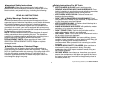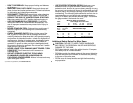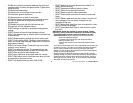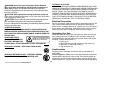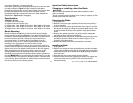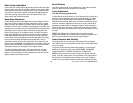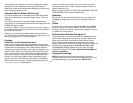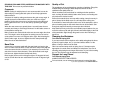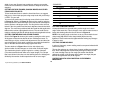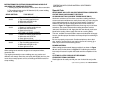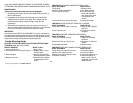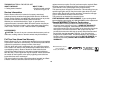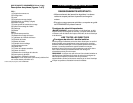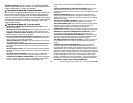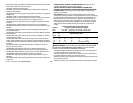
15
If you have any questions, call 1-800-54-HOW-TO
Quality of Cut
The smoothness of any cut depends on a number of variables. Things like
material being cut, blade type, blade sharpness and rate of cut all
contribute to the quality of the cut.
When smoothest cuts are desired for molding and other precision
work, a sharp (60 tooth carbide) blade and a slower, even cutting rate
will produce the desired results.
Ensure that material does not creep while cutting, clamp it securely in
place. Always let the blade come to a full stop before raising arm.
If small fibers of wood still split out at the rear of the workpiece, stick a
piece of masking tape on the wood where the cut will be made. Saw
through the tape and carefully remove tape when finished.
Keep both feet firmly on the floor and maintain proper balance. As you
move the miter arm left and right, follow it and stand slightly to the side
of the saw blade. Sight through the guard louvers when following a
pencil line.
Clamping the Workpiece
Turn Off and Unplug Saw
If you cannot secure the workpiece on the table and against the fence
by hand (irregular shape, etc.) or your hand will be within 6” of the
blade, a clamp or fixture must be used.
Other convenient clamps such as spring, bar or C-clamps may be
appropriate for certain sizes and shapes of workpieces. Use care in
selecting and placing these clamps and make a dry run before making
the cut. The left fence may be adjusted to aid clamping.
Support for Long Pieces
Turn Off and Unplug Saw
ALWAYS SUPPORT LONG PIECES.
For best results, use an extension work support to extend the table
FERROUS (IRON AND STEEL) MATERIALS OR MASONRY WITH
THIS SAW. Do not use any abrasive blades.
Crosscuts
NOTE: Cutting of multiple pieces is not recommended, but can be
done safely by ensuring that each piece is held firmly against the
table and fence.
A crosscut is made by cutting wood across the grain at any angle. A
straight crosscut is made with the miter arm at the zero degree
position. Set the miter arm at zero, hold the wood on the table and
firmly against the fence. Turn on the saw by squeezing the trigger
switch.
When the saw comes up to speed (about 1 second) lower the arm
smoothly and slowly to cut through the wood. Let the blade come to a
full stop before raising arm.
Miter crosscuts are made with the miter arm at some angle other than
zero. This angle is often 45 degrees for making corners, but can be
set anywhere from zero to 47 degrees left or right. After selecting the
desired miter angle, be sure to tighten the miter clamp handle (4).
Make the cut as described above.
Bevel Cuts
A bevel cut is a crosscut made with the saw blade at a bevel to the
wood. In order to set the bevel, loosen the bevel clamp knob (10) and
move the saw to the left as desired. (It is necessary to move the left
side of the fence to allow clearance). Once the desired bevel angle
has been set, tighten the bevel clamp knob firmly.
Bevel angles can be set from 2 degrees right to 47 degrees left and
can be cut with the miter arm set between zero and 47 degrees right
or left.



